|
There is a lot of fear surrounding GMOs, or genetically modified organisms. Understandably so -- new technologies are always scary. They always require rigorous testing to prove their safety and efficacy. But there's a difference between healthy skepticism (which is a good thing) and flat-out rejection of scientific facts (which is a terrible thing).
It doesn't help that many so-called "scientists," like Nassim Nicholas Taleb (who is actually a statistician, not a biologist), as well as celebrities, like Gwyneth Paltrow (who have no background in science or statistics), passionately spread misinformation, falsehoods, and half-truthes in order to scare others into their way of thinking.
I completely understand why, intuitively, someone would find GMOs to be scary. But sometimes, the more you learn about a topic, the less scary it becomes -- and the more obvious it is that the original information you received was biased or outdated.
For example, did you know that GMOs are the reason tens of thousands of children with type 1 diabetes are alive today? It's true. Type 1 diabetics lack a hormone called insulin, which regulates the amount of glucose in the blood. Prior to 1978, diabetics received insulin that was extracted painstakingly from the pancreas glands of pigs and cows. It took 8,000 pounds of pancreas glands from 23,500 animals to make one single pound of insulin. The manufacturer, Eli Lilly, needed 56 million animals per year to meet the increasing U.S. demand for the drug. Not to mention pig and cow insulin is not the same as human insulin. It was an inferior medicine, and it was super expensive to extract it from all those pigs.
Left: pancreas glands are examined as they arrive from the meatpacking house. On the right, the glands are run through grinders before the next step in the process, insulin extraction. Image credit: Smithsonian, Two tons of pig parts: Making insulin in the 1920s.
But then, in the 1970s, recombinant DNA technologies were invented. These technologies allowed scientists to stitch DNA together from multiple or different organisms, and express it in microbes. Because of the political climate at the time (which isn't so very different from the one we're in now), the public feared these technologies. Due to political pressures, a committee of ethicists, politicians and biologists agreed to a temporary moratorium on this new technology, pending further investigation. But the founders of Genentech discovered a loophole: the moratorium was against stitching DNA from different organisms together. But, biochemist and Genentech co-founder Dr. Herbert W. Boyer realized, if he chemically synthesized the DNA, rather than extracting it from organisms, he could still use the new recombinant technology to make medicine and save lives. Insulin was a prime candidate, because it is a small protein (at the time, it was hard to synthesize longer genes) whose amino acid sequence was known. Therefore, he wouldn't need to isolate the gene from humans. He could simply design a DNA sequence that matched the protein sequence. Then, he stitched the sequence into a bacterial plasmid, or a circular piece of DNA for expressing proteins and bacteria.
After this, scientists were able to isolate and purify human insulin from genetically modified bacteria cells.
Soon, Genentech got FDA approval to use their insulin in humans. Because it is safer and more effective than animal insulin, this ended up being one of the main reasons for the increase in lifespan and quality of life for type 1 diabetics. The lesson here is that, yes, new technologies can be scary, and it is important to have regulatory bodies like the FDA, as well as rigorous scientific standards and ethics committees to ensure that research is being done honestly, safely and humanely. But it's also important to use your critical thinking skills to evaluate new innovations. Sometimes, our gut tells us one thing, when facts and evidence may eventually point to another. Here are some tips and tricks that I use: 1. Accept reality, even if you don't like it or would like to change it. 2. Observe and check "facts" in the world around you. Are they still true? Have they changed? Was your original observation not supported by the data? (This is known as the empirical method of science.) 3. Discuss facts, theories and hypotheses in a logical and consistent way. Avoid contradictions. For example, if you think "all GMOs are bad," then you had better never eat hard cheese again, since virtually all hard cheeses are made using GMOs. You'd also better never take insulin, human growth hormones, follistim (for treating infertility), human albumin, monoclonal antibodies, antihemophilic factors, vaccines, and many other drugs. 4. Avoid false or unrealistic facts. There's a strong positive relationship between intelligence and skepticism. Smart people question what they learn, and ask questions like, Why? How? Could that result be reproduced? Who wrote this article? Are they a credible source? What might their motives have been? (Hint: if you're reading something on a blog and there is a link to a product on their page -- that's typically the motive. For example, everything on The Food Babe. Full disclosure: I link to a book at the end of this post. My motive isn't to sell you the book -- I'm just really passionate about scientific literacy.) 5. Be flexible in your thinking. Be willing to revise your opinion if you find new information. Remember: good thinkers avoid ideas that are absolutely, unconditionally true. Of course, this one can be tricky. In the words of Hermione Granger, "Dumbledore says people find it far easier to forgive others for being wrong than being right." 6. Be willing to admit when you were wrong. For example, when I first heard of the AspireAssist, an FDA-approved medical device that helps morbidly obese people empty food from their stomachs into a toilet, I thought it could promote eating disorders. However, after reading the research, I learned that the AspireAssist actually made users more mindful eaters and increased healthy eating habits -- a finding that was supported by both self-report and the fact that users lost much more weight than could be accounted for by the AspireAssist alone. I hope that by using these thinking skills, you are able to make more rational and informed decisions. *** Want to know more about the history of genetics? I learned this and many other amazing stories from The Gene: An Intimate History, by Siddhartha Mukherjee. I totally almost stopped reading before I made it to the first chapter, because the prologue was super boring. But everything else has been incredibly cool and interesting, and I highly recommend this book to anyone with an interest in science.
1 Comment
2/24/2017 10:38:50 pm
So it should be, thanks for sharing this with us.
Reply
Leave a Reply. |
About the Author

Eva is a content specialist with a passion for play, travel... and a little bit of girl power. Read more >
Want to support The Happy Talent? CLICK HERE!
Or Find me on Patreon!
What's Popular on The Happy Talent:
Trending in Dating and Relationships:
What's Popular in Science: Playfulness and Leisure Skills:
Popular in Psychology and Social Skills:
Categories
All
|





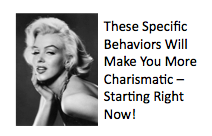
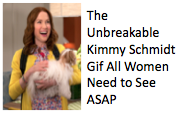



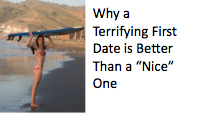










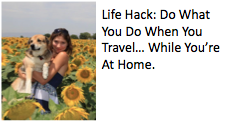
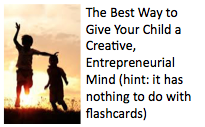
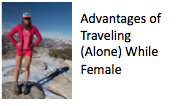





 RSS Feed
RSS Feed